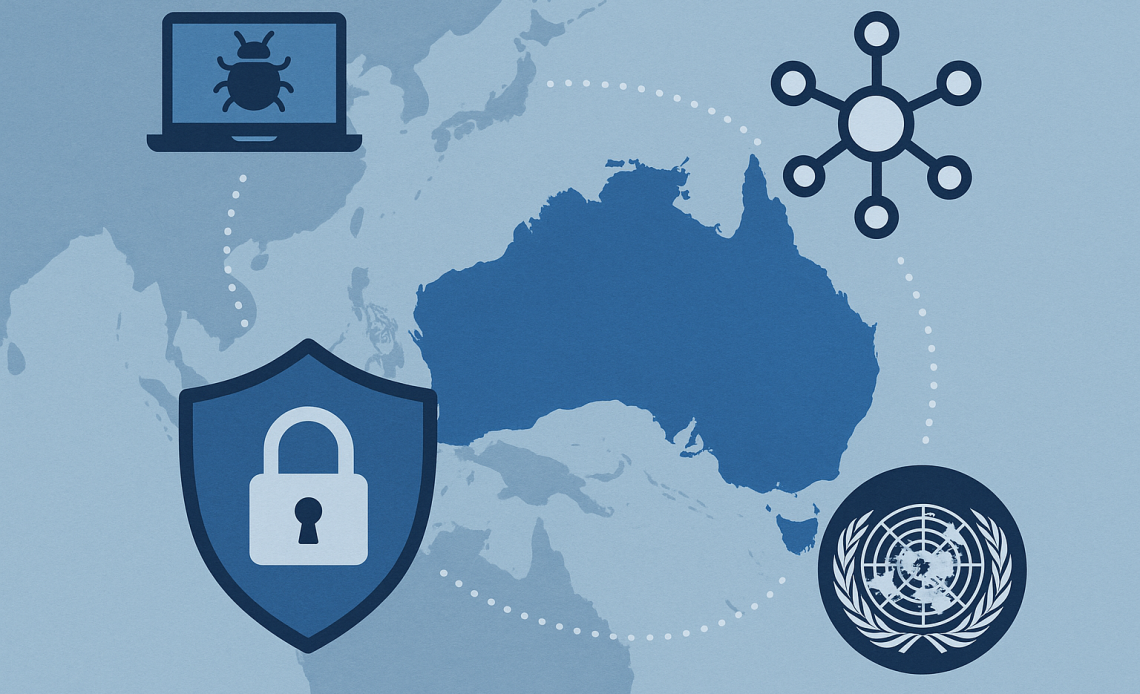Australia is expanding its regional cybersecurity network, pledging A$83.5 million ($54.4 million) to strengthen defences across the Indo-Pacific amid rising cross-border digital threats.
The four-year plan, running until 2028, underscores Canberra’s view that cyberattacks have evolved beyond national boundaries and require collective action.
According to a Bloomberg report, the funding, channelled through Australia’s Southeast Asia and Pacific Cyber Program, was announced by Assistant Minister for Foreign Affairs and Trade Matt Thistlethwaite in Hanoi during a United Nations plenary on the convention against cybercrime, where Australia reaffirmed its commitment as a signatory.
Strengthening cross-border cyber capacity
The investment aims to help Southeast Asian and Pacific nations develop cyber-resilience frameworks, enhance law-enforcement coordination, and build digital forensics capabilities.
Australia’s approach highlights a growing focus on regional cooperation rather than purely domestic fortification.
Thistlethwaite explained that cybercriminals increasingly operate across jurisdictions — establishing networks in one country, using forced labour from another, and targeting victims elsewhere.
The model reflects the rise of transnational cyber-scams and ransomware rings.
According to the United Nations, cybercrime is expected to cost the global economy around $10.5 trillion annually by 2025, citing data from industry experts.
The new program, aligned with Australia’s Indo-Pacific strategic objectives, also supports regional partners in implementing international cyber norms.
It follows concerns about critical infrastructure attacks and the weaponisation of personal data, both of which threaten economic stability and public trust in digital governance.
Global economic losses reach hundreds of billions
Cyberattacks have become a financial and social burden on a global scale.
Bloomberg reports that the Global Anti-Scam Alliance — a consortium of technology firms, financial institutions, and cybersecurity specialists — reported earlier this month that consumers lost an estimated $442 billion in the past year to online scams.
The figure highlights how fraudulent activities are growing in sophistication, exploiting gaps between regulatory systems.
In Australia alone, cybercrime is projected to cost the economy over A$12.5 billion in the 2024-2025 financial year.
Losses from digital theft, data breaches, and business email compromise incidents have placed immense pressure on both private firms and public agencies.
Thistlethwaite warned that hackers frequently target government databases, healthcare systems, and companies holding sensitive intellectual property.
Coordinating regional cyber responses
Australia’s funding announcement coincides with global efforts to finalise a multilateral treaty on cybercrime under the UN framework.
The signing event in Hanoi brought together member states seeking to align enforcement mechanisms against crimes such as ransomware, online child exploitation, and financial fraud.
Thistlethwaite’s participation underscored Australia’s dual role as both a donor and a policy driver.
The new allocation extends existing partnerships in Southeast Asia and the Pacific, where Canberra has been providing training and digital security support.
The initiative aims to bridge capability gaps between developed and developing economies, ensuring a more balanced response to threats that affect trade, communication, and governance systems.
By investing in preventive capacity rather than reactive measures, Australia is betting on long-term resilience.
The program will also help smaller nations adopt secure-by-design principles, improve data-sharing standards, and implement frameworks for rapid incident response.
Cybersecurity as regional diplomacy
The move positions cybersecurity as a key pillar of Australia’s diplomatic outreach in the Indo-Pacific.
It complements broader security strategies focused on infrastructure, maritime safety, and supply chain integrity.
Canberra’s stance aligns with global recognition that digital stability is integral to both national security and economic growth.
As cyber risks evolve, Australia’s new investment signals a shift from isolated enforcement to shared protection.
Through partnerships built on technical expertise and mutual trust, the country aims to create a unified digital defence network capable of countering the complex, borderless nature of cybercrime.
The post Australia commits A$83.5 million to boost cyber resilience across the Indo-Pacific appeared first on Invezz

